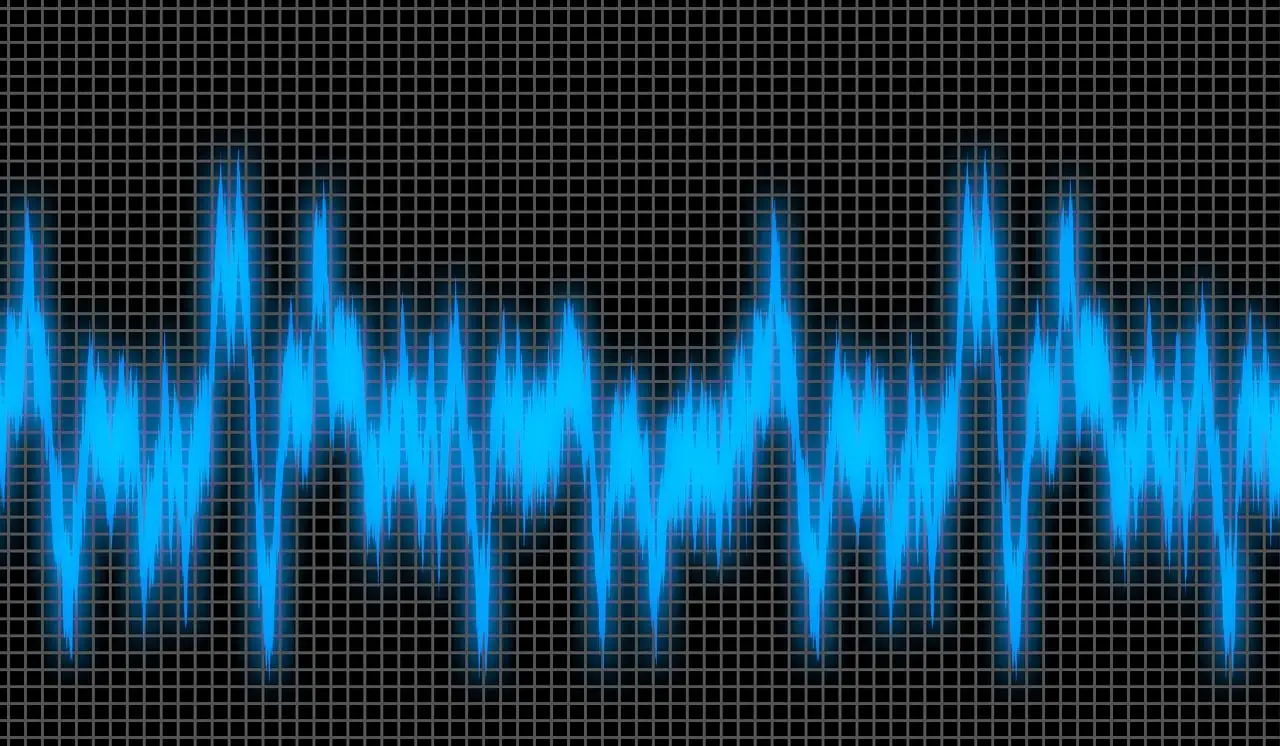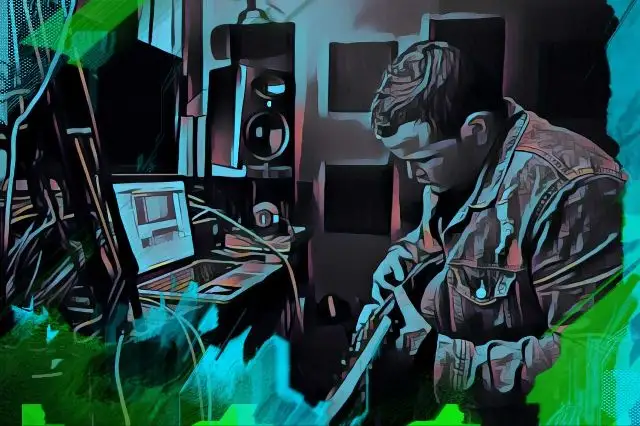Understanding Sample Rate in Audio
Every time sound moves from a microphone to a digital audio workstation, a conversion is made. Audio interfaces help transmit an analog signal to a digital signal, utilizing the settings configured on your DAW. These settings are extremely important, as they can affect the overall quality of your composition and audio quality.
One of the most important factors you'll consider when converting an analog continuous signal to a digital system is the sample rate. This rate determines how much of your original signal is converted into a digital recording, thus giving your listener the amazing "in-studio" experience.
Below, we'll break down everything you need to know about understanding sample rates so that you can preserve all of the magic of your original recording. Let's take a look!
What is Sample Rate for Audio?
The sample rate refers to the rate at which sound waves are captured and converted into digital audio. Audio quality is higher with higher sample rates since more of the sound wave is being captured and converted to a digital audio recording. Your sample rate will vary based on the intention for any particular project. For instance, you might record an audio signal at a different sampling rate than preserving archival masters or audio files.
In any case, the sample rate is calculated utilizing the Nyquist-Shannon theorem. This digital processing fundamental states that the sample rate must be at least twice as high as the original sound wave captured to create a smooth conversion from analog audio to digital signal.
For example, audio is often processed with a sample rate of 44.1 kHz because the human hearing range generally lies between 20 Hz to 20 kHz. Therefore, 44.1 kHZ is fairly sufficient for reproducing most of the audio frequencies that fall across the frequency spectrum. However, certain instruments and sounds may fall outside that range, so it's important to evaluate each situation individually to preserve the best sound quality possible.
The Nyquist frequency, also called the folding frequency is measured from the highest possible point of the sound wave. 20 kHz is roughly half the sample rate of 44.1 kHz with some extra room, which is why most modern recordings have a sample rate of 44.1 khz or higher.
Does higher sample rate mean better quality?
The higher the sample rate, the faster samples are converted and captured into digital audio. Technically, a higher sample rate equates to better quality. However, that does not necessarily mean that you'll be able to detect a notable difference across the audio file. Since the audible spectrum for human hearing lies between 20 Hz to 20 kHz, the general frequency range as explained above for digital audio is converted at a sample rate around 44.1 or 48 khZ typically.
Digital conversion at a higher sample rate does increase the frequency content of the audio file, but it also increases the size of the digital data. Unless you're prepping audio material for a specific purpose like audio preservation or for a specialized application, this standard audio sample rate range is usually sufficient.
Should my sample rate be 44.1 or 48?
Many audio professionals still consider 44.1 kHz to be the baseline for recording audio. This is because you can still get reasonably high resolution audio without taking on more processing power than the typical consumer CPU can handle. However, it's common for professional audio to be recorded at 48 kHz to provide additional context across the frequency spectrum.
Keep in mind that popular streaming platforms like Spotify, for instance, default to a streaming rate of 44.1 kHz. For consumer consumption on streaming platforms, CDs, and MP3s, 44.1 kHz remains the gold standard. For more nuanced professional audio applications, video, and DVDs 48 kHZ is the standard. Essentially, your sample rate should reflect your intended audio output and match the use case accordingly.
Bit Depth Versus Sample Rate: What's the Difference?
You'll often hear sample rate paired with a certain bit depth. While both have to do with the preservation and transmission of audio quality, they measure different things. The sampling rate determines how many frequencies can be captured when transmitting audio. Therefore, a lower sampling rate will have a lower frequency limit and limited range compared to audio captured at a higher sampling rate.
Bit depth determines the resolution of the amplitude of each sample. Hence, it's advisable to have both a reasonable bit depth and sample rate to preserve your sound accordingly. Whereas 44.1 kHZ holds as the baseline sample rate for most common applications like CDs, MP3s, and streaming services, 24-bit depth is the comparable bit depth to work up from in professional audio.
The Different Bit Depths
You can think of bit depth as the dynamic range for the amplitude or loudness of a sample. The wider the bit depth range, the more processing power is used. Generally, 24-bit depth audio is the ideal baseline for human hearing, though quality can continue to increase with 32-bit or even 64-bit audio.
Lower bit depths like 8-bit and 16-bit depth also exist, but they tend to be much lower quality and there is a noticeable difference between 16-bit depth and 24-bit depth. In fact, "bitcrush" plugins mimic the feeling of a lower bitrate to create a "low-quality audio" effect that can sound nostalgic for earlier eras.
What's the Ideal Sample Rate and Bit Depth?
The ideal sample rate and bit depth will depend on the scope of your project. If you're planning on making music for digital streaming platforms like Spotify or Apple Music, you'll generally want to record at 24-bit depth with a sample rate of 44.1 kHz as a baseline. For other projects, you should inquire regarding the ideal settings for your audio tracks before setting up your sessions - ideally, your entire process should be consistent across the same sample rate.

Audio Sample Rate Tips and Tricks
Use these audio fundamentals pointers to preserve your audio quality in and out of every session:
Keep Your Sample Rate Consistent
Whatever sample rates you choose to use in your audio session, keep it consistent. Mixing and matching in the middle of a session can lead to what is called audio aliasing or aliasing artifacts, which is essentially harsh points of distortion. These artifacts are created when a sound is transmitted at a sample rate too low to represent certain points across the frequency spectrum. Songs with a lot of high frequency content should opt for a higher sample rate for this reason.
Use 44.1 kHz As Your Standard
When in doubt, 44.1 kHz should be used as your baseline as a sampling rate that can reasonable capture the audio frequencies audible to human hearing. You might miss out on some high frequency content depending on the song, so you should always weigh your decisions based on the project at hand. In any case, it's wise not to go lower than a 44.1 kHz sampling rate.
Check Your Intended Output
Technically, there is no "ideal" sample rate since the conditions will shift based on your chosen output. If you're working with a new setup or for a particular application, be sure to check on your intended output's preferred specs before you start recording. This also applies if you intended on passing along your audio to another musician in the chain like a mixing engineer.
Sample Rate in Audio FAQ
Sample rate determines the accuracy of your digital audio, making it an incredibly important element to take into consideration throughout any recording session. Here are some commonly asked questions and answers to help you along your journey converting analog audio.
Can you hear the difference between 48kHz and 96kHz?
It is admittedly challenging to hear the difference between 48kHz and 96kHz. However, these higher sample rates might be helpful for premium audio preservation over a longer period of time.
Is it better to record in 44.1 or 48?
As a rule of thumb, the higher the sample rate, the more details you'll capture. It's best to record in 48 kHz to ensure that you capture more details of your sound source. 44.1 kHz should be used as a baseline for professional recording, with the sample rate ideally resting a bit higher.
What is the best sample rate for music?
The best sample rate for any musical application depends largely on your intentions for the audio in question. In most cases, your sample rate should be 44.1 kHz or greater to reasonably capture all of the components of your original sound wave.
Why is sample rate important?
Every time you convert analog to digital audio or process sound through an audio interface, the sound is being processed a specific sample rate. Using too low of a sample rate can cause your audio to take a significant dip in sound quality, leading you to lose essential elements of your original source.
Preserving your sample rate is essential when producing, engineering, or recording music. While a very high sample rate can provide unmatched quality, the file size needed to create audio resolution above 48kHz simply might not be practical for day-to-day use.
For an optimal sample rate, stick to 44.1 kHz or higher, and be sure to double check your intended output before tracking audio samples. Taking care to preserve your sampling rates throughout every stage of the music production process will ensure you have a quality product. Have fun putting your new knowledge of sample rates to good use!





